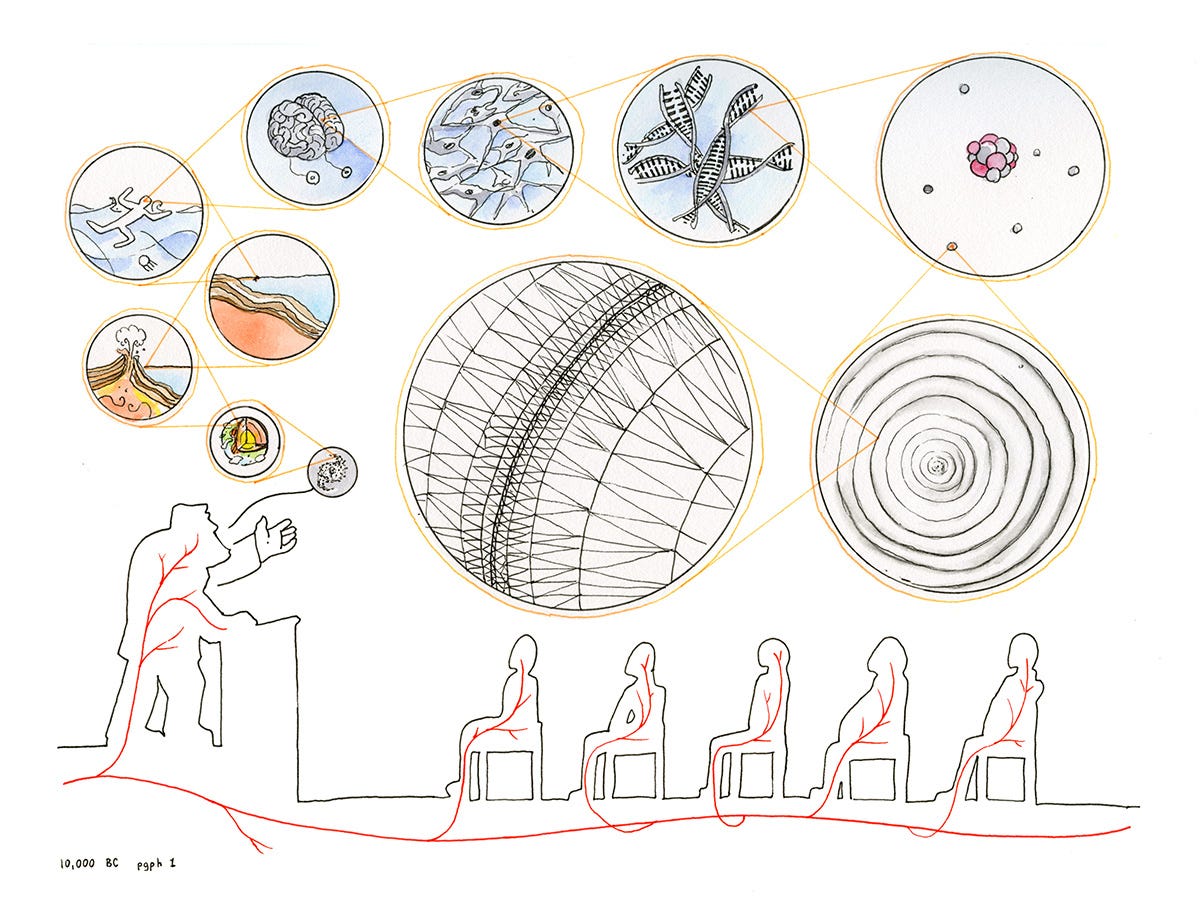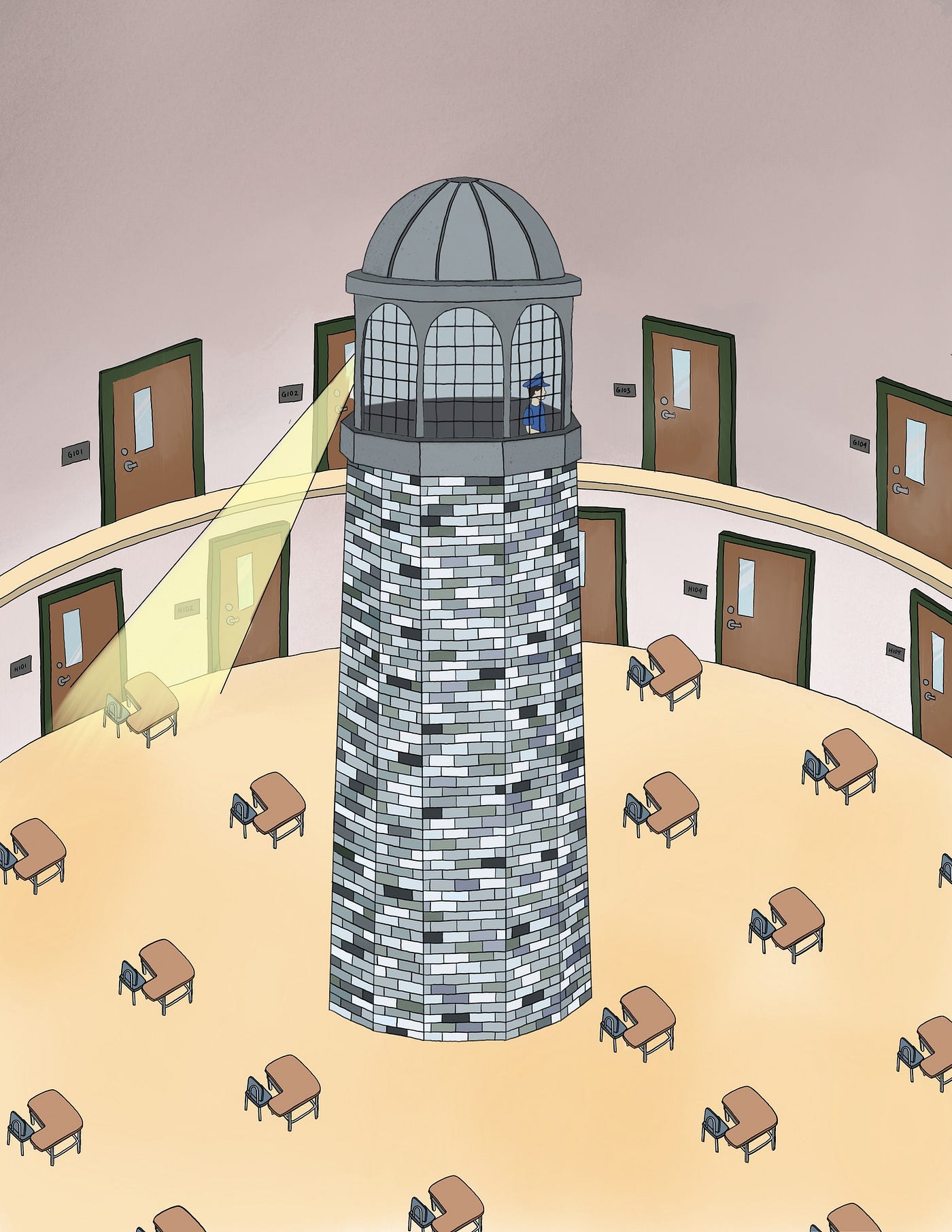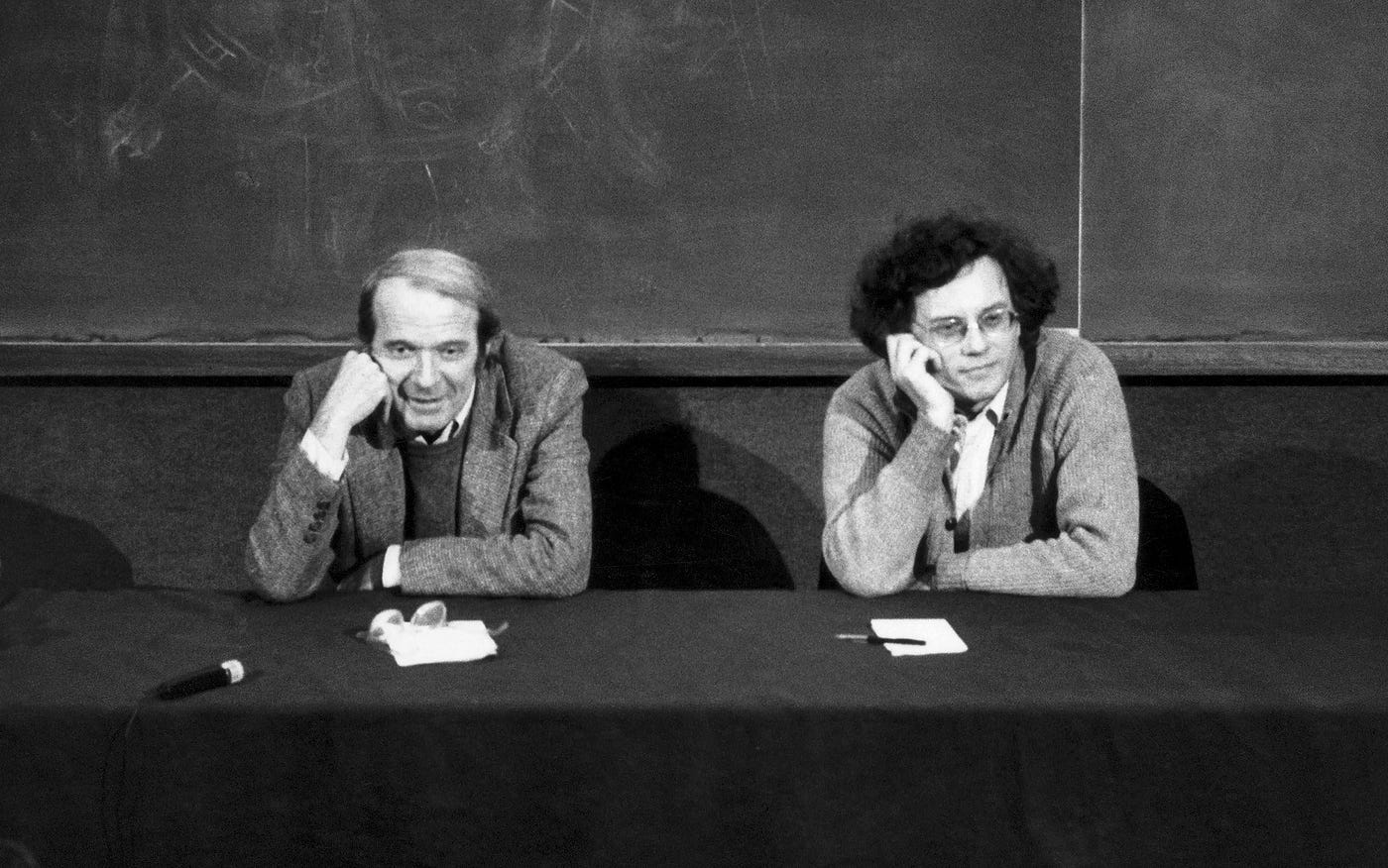Introducing a Deleuzoguattarian philosophy in the classroom through a series of becomings

When initially tasked with creating a blog series that follows a cohesive theme, I perceived it as a constraint on my writing freedom. How dare my writing professor tell me what to do! Yet, upon contemplation, I recognized the merit in narrowing my focus. Ironically enough, my preoccupation with the notion of restriction inadvertently stifled my creative potential. I refused to write because I was concerned about the limitation of what I could write about. Thus, I resolved to explore this very concept.
As a K-12 speech and debate educator, I have been concerned with fascism in the classroom. The central question driving my exploration is: How can educators, particularly myself, repurpose the classroom to adeptly confront constraints on freedom while simultaneously narrowing students’ attention in a manner that nurtures their creative potential?
For my assignment, I will present eight blog posts delving into the notion of becomings within education.

It is evident that oedipalization has extended from the familial structure to the classroom. This isn’t news. Arbitrary hierarchies, like that of the parent-child or teacher-student relationship, appear to be the cause of a typified repression: a limit on creativity. If students follow the stringent rules of the curriculum, they receive rewards; on the other hand, disciplinary practices of punishment serve as an incentive for individuals to fit neatly into their assigned roles: a conformity. Surely, this Foucauldian discourse should not be perceived as endorsing apathy. Although revolutionizing the classroom is easier said than done, it is possible; the infinitesimal point between the pencil and paper makes it so.
A serious set of questions must be posited if we are to challenge the fundamental structure of institutionalized education: Why is flipping the classroom necessary and by what means can this be accomplished? Is it ever appropriate to limit a student’s creativity? Are all teaching methods fascist (or rather, fascizing) in one form or another? Is it even possible to fully break down the hierarchy in the classroom? And at what point does one know if they have successfully dismantled the teacher-student hierarchy? These questions, for me and many other educators, are left unanswered.

To dismantle the hierarchy within educational spaces is to dismantle the authoritarian teaching system that favors conformity over the nurturing of creativity. This political project involves a dual process reminiscent of what philosophers Gilles Deleuze and Félix Guattari may have termed “becoming-teacher” and “becoming-student” in their influential work, A Thousand Plateaus. They write:
A teacher’s commands are not external or additional to what [they] teach us.
The teacher imparts knowledge to the students while also gaining insights from them, creating a reciprocal dynamic where the student, in turn, educates the teacher. Rather than viewing the relationship between the teacher and student as diametrically opposed, it should be seen as a symbiotic interplay, with each containing elements of the other. This is a becoming-teacher of the student and a becoming-student of the teacher.
Thomas Byrne’s blog post succinctly defines what constitutes a becoming (though, it must be noted that A Thousand Plateaus is much more rich in detail):
Becoming is a process, a transformation, a discovery, a threshold, a door, a journey, a mystery. Becoming is not being, not static, not defined or extended, not self-evident, not traceable nor provable. Becoming is not within the realm of judgement, whatsoever. And it has no beginning nor end in time, as we have come to accept the meaning of that term.
Becoming is a process where one can become-woman, become-child, become-animal, become-plant, become-mineral, and become-imperceptible by means of molecularity. Nowhere does a becoming entail imitation; rather, it involves a transformative journey that defies replication. Within the context of education, becoming is the space between the lines. Yet, I struggle with finding the space between creativity and unintelligibility; the space between music and mere noise (or silence). That is, at what point do I establish a set structure for the students to utilize? At what point does creativity become unintelligible? Essays serve as a useful example here: essays must be readable to be interpreted. A fine line exists between an enriching curriculum and a fascist agenda.
I aim to analyze the elements of what constitutes becomings in my classroom as well as pave the way for diverse transformative processes, opening up the possibility for various becomings. This ambitious project embarks upon a journey to craft a politics of play. Playing with signs and significations for the purpose of revolutionizing educational spaces. Playing with literary devices and stylistic tendencies to transpose dominant significations of what constitutes a teacher and student (what they ought to look like, act like, and think). Was it not Paulo Freire who argued that we should traverse viewing the classroom as a workplace of capitalist modernity? How can we play in the classroom when we are beat into submission by the ruling classes to believe that work is not the site of play? If Marx is right (he is) on the point regarding class relations mediating social relationships, then there is no doubt that this pervasive thought extends itself into the classroom. Everything must serve productive ends. Therefore, it is integral that the educator acknowledge all the various mechanisms in which the classroom is policed, structured, and organized.
None of this is to assume that a politics of play is chaos or anarchy; rather, there must be a serious precision when arranging a critical politic. The masses tell us to write books, essays, and blog posts in the most conventional manner: a convenient mix of structure, order, and arrangement. Telling us that a blog post should be written in this or that way; that the longevity or shortness of a written line is the only thing of importance. We should not listen. We should only discern the advice we are given. In this fashion, I find it necessary to revolutionize the classroom.

Leave a Reply